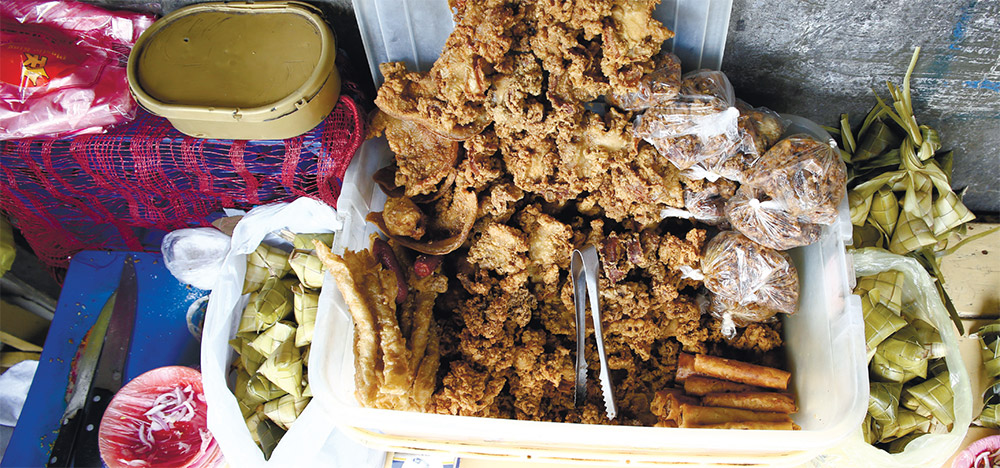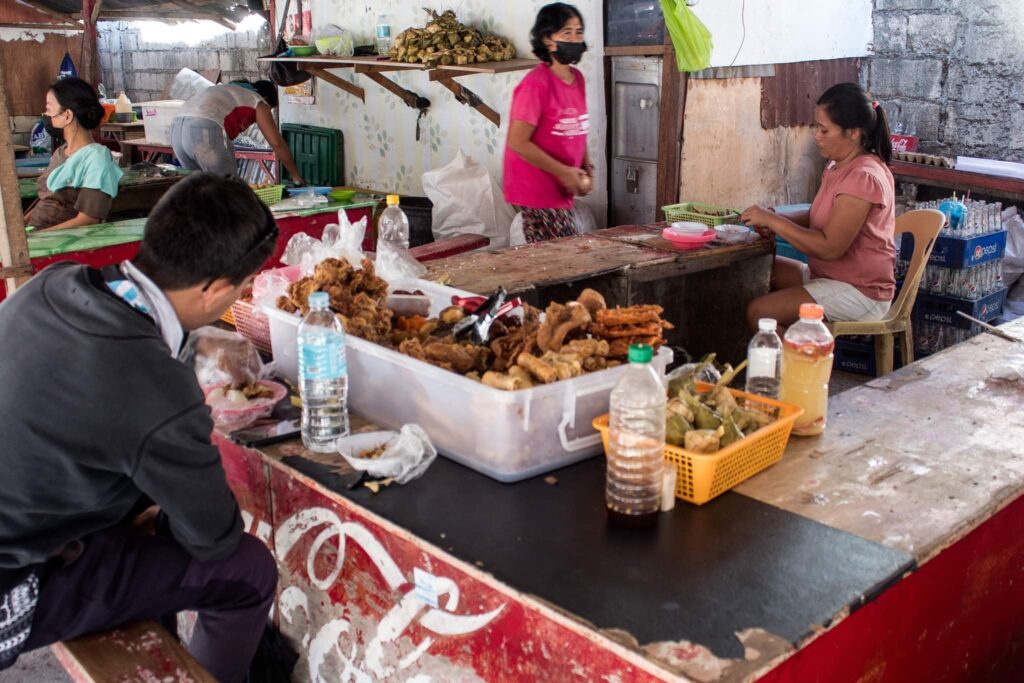If you happen to be in Cebu, there’s a way of eating that’s unique to the Cebuano people. And this eating culture has risen from an ordinary street meal to an iconic tourist must-do.
To the ordinary Cebuano, pungko-pungko is a go-to meal break from their day’s labor. These roadside food stalls have been popular with students up to your average day worker.
Today, tourists and travelers learned about this humble way of eating, but what led to its popularity?
What made pungko-pungko seem so special?
Table of Contents
What is the meaning of pungko-pungko?
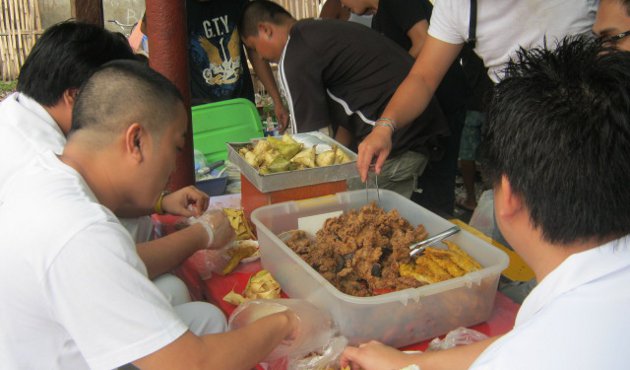
Pungko-pungko has an equivalent meaning of slouch or squat because you’re to eat on small benches and a small communal table. And you’re expected to share this space with other eager diners as well.
In front of you is a big, rectangular box where all varieties of fried foods that mounts up. You need to sit on a small bench and choose from food options like fried pork intestine, or locally known as “ginabot“, pork chop, “ngohiong“ and meatballs. This is best paired with pusô (hanging rice), which is another iconic food in Cebu, vinegar with chili and white onions to dip your food with.
Pungko-pungko, if you go around the city of Cebu, is everywhere. Along the corners and alleyways, this food stall is there to serve the Cebuano public. It’s within reach, which is why the locals like it.
You go out and it’s just right there. Pretty convenient, isn’t it?
How Do Cebuanos Love Pungko-pungko?
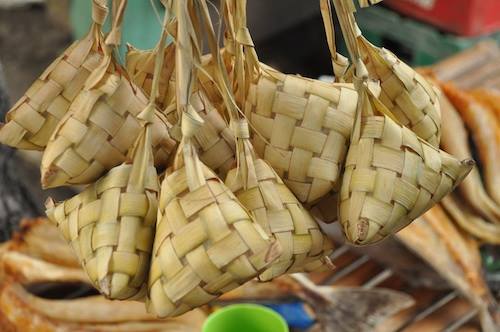
The Cebuanos love pungko-pungko, as it doesn’t hurt their pockets when they decide to eat this roadside food. It’s a comfort to know that this food that they enjoy doesn’t cost too much and that it satisfies your crave.
As cheap as less than $2, you’ve got to enjoy and experience this local food scene. As a Cebuano, one compliment that I always hear from tourists is that dining in Cebu is way cheaper than in other cities in the Philippines.
And that’s true with pungko-pungko.
Pungko-pungko is popular because it’s comforting, filling, affordable, and accessible.
Cebuanos have taken pungko-pungko on another pedestal from a go-to street munch to a comfort food. This street dine is an option for those who are stressed, burnt out, or Cebuanas experiencing food cravings during their period.
The Rise of Pungko-pungko
Around 2 decades ago, nobody, outside the ordinary Cebuano populace, bat an eye on these street food stalls.
The people of Cebu fell in love with the idea of pungko-pungko. Cebuanos grew up with it. It became a part of their life.
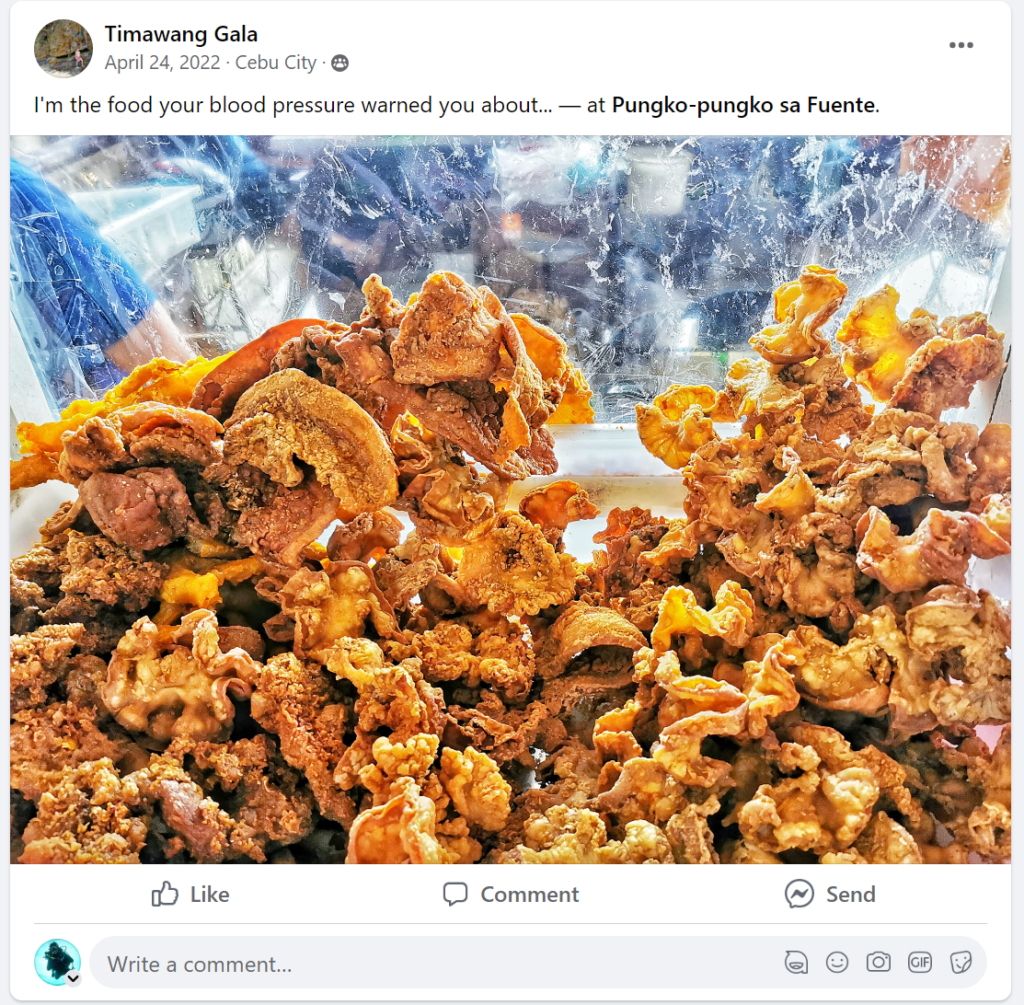
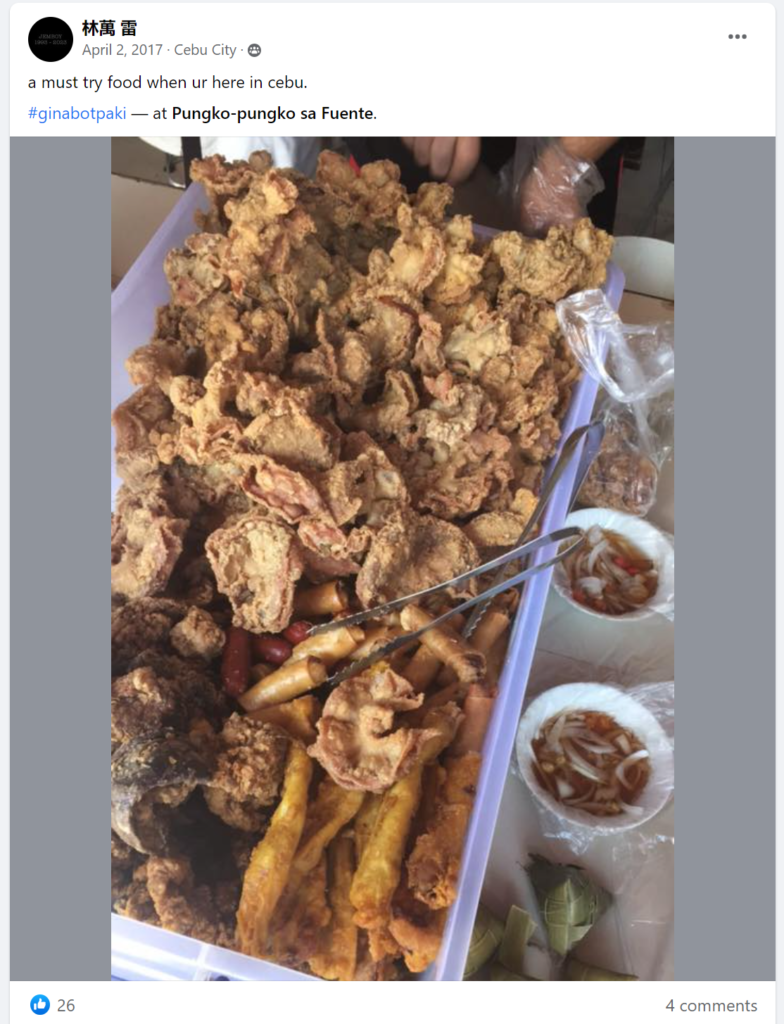
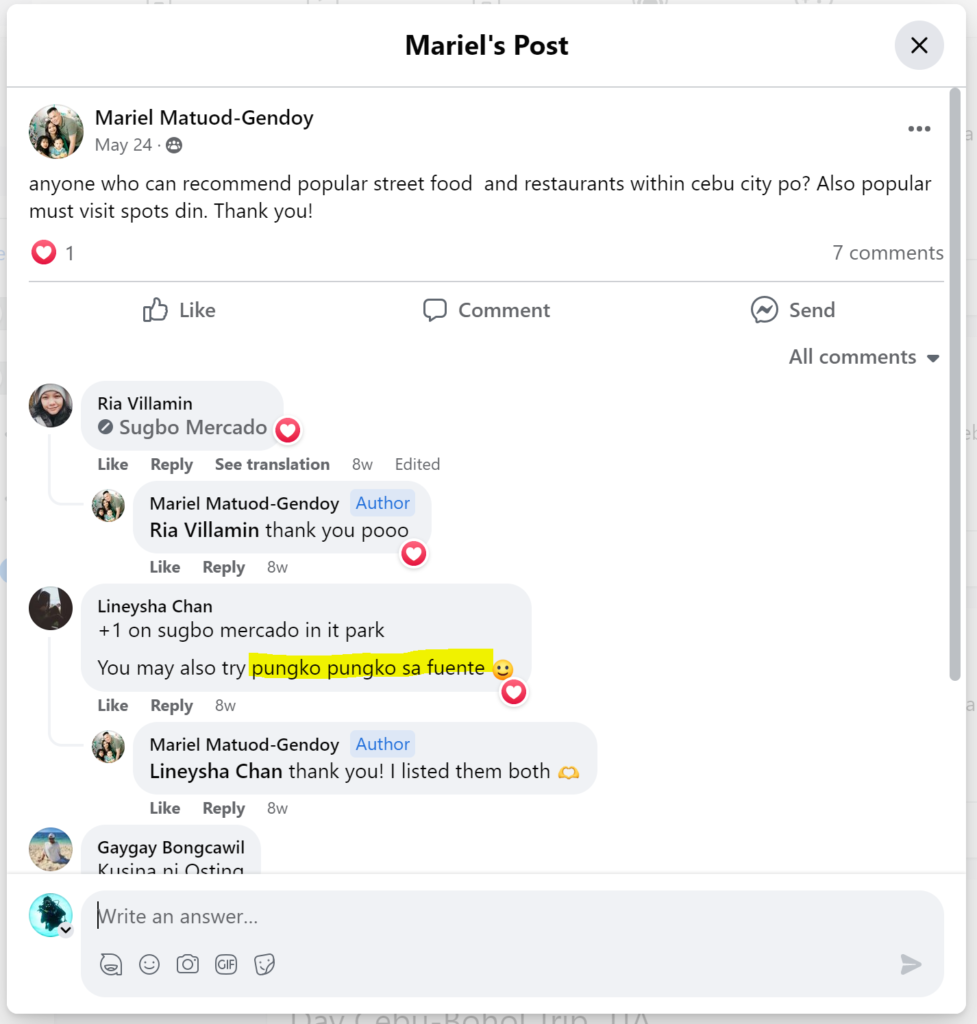
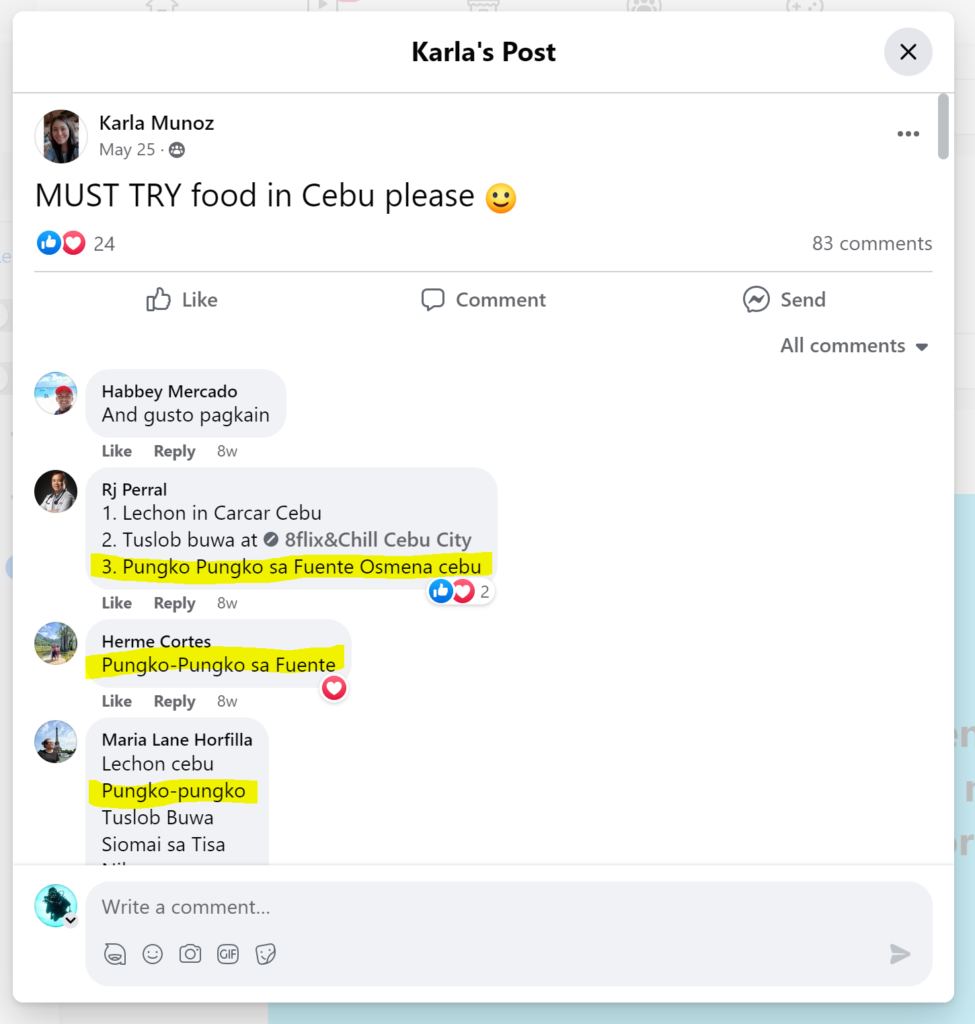
And when you love something, you share it with people. Just ask any local, they’ll tell you with so much excitement why you gotta try pungko-pungko and all the other amazing food spots around the island.
People don’t recommend what they hate, they recommend what they love.
They will offer you this unassuming food scene, an eating practice that has grown into a local culture. Pungko-pungko has developed into what it is today, thanks to the people of Cebu who share this to outsiders.
The Real Taste of Cebu
I believe that the rise of pungko-pungko in the tourist food scene is because of its authenticity. The real hands-on pungko-pungko will let you experience the real Cebu.
It lets you see the true Cebuano society- I can’t overemphasize enough that this is a true cheap but delicious food, and eating elbow to elbow with fellow diners gives you the sense of community.
You’re not to “eat” in pungko-pungko, you’re to “experience” it.
Heck, let me say that the food in that box that I was telling you wasn’t that unique. You can find these foods around the Philippines. This is not something that you cannot cook or find a recipe online.
Again, you’re to experience this unique food culture.
If you want to try the true Cebu, you must try pungko-pungko.
Where to eat pungko-pungko in Cebu?
These are the hottest pungko-pungko spots that you can try around:
